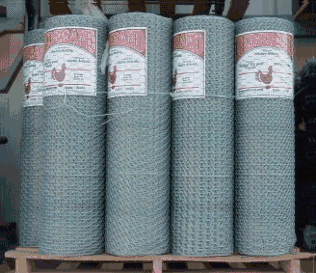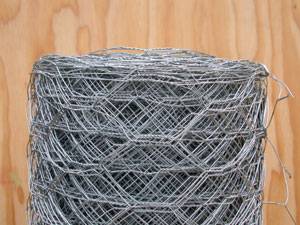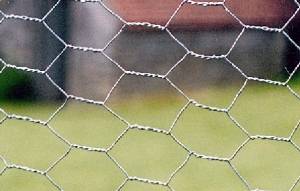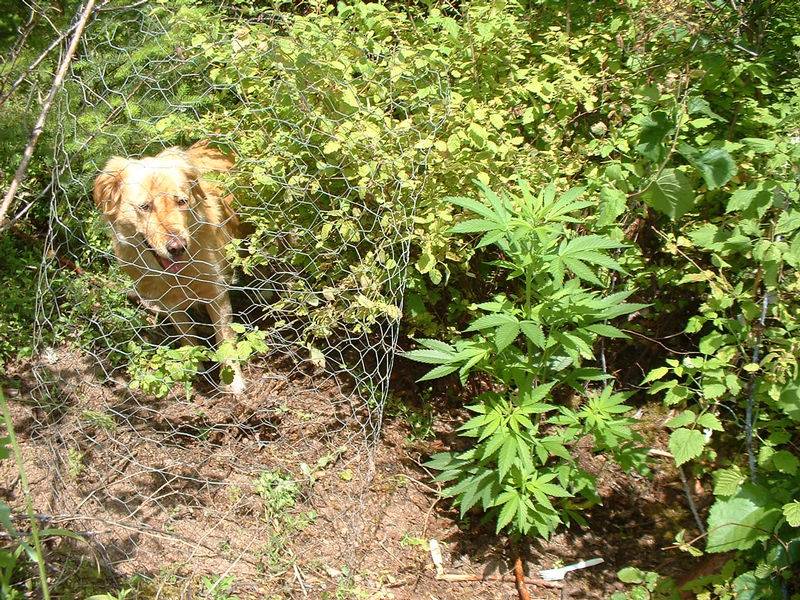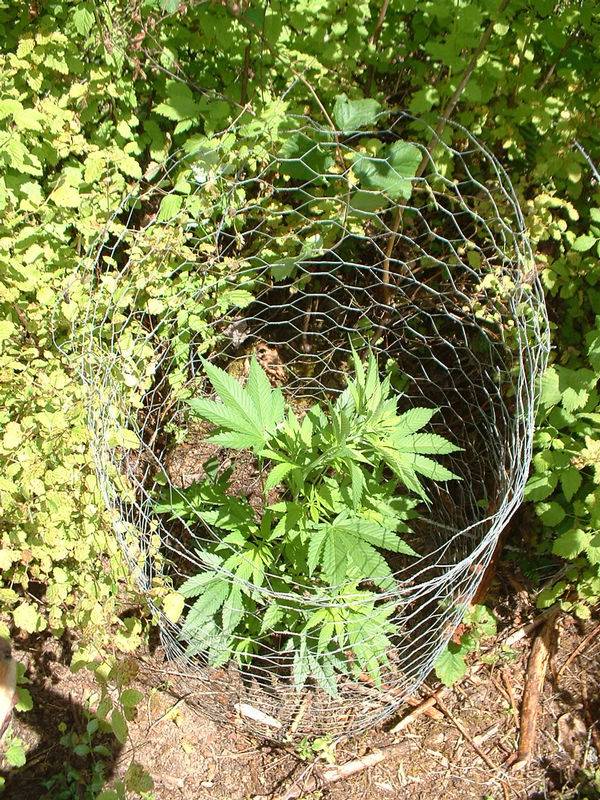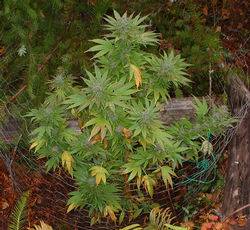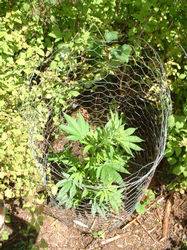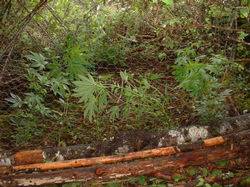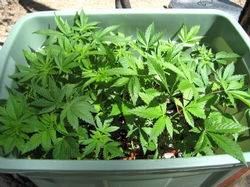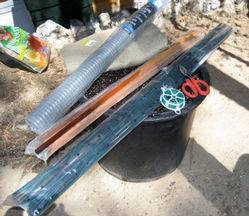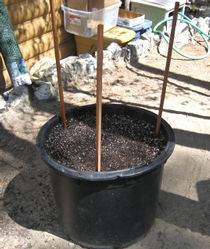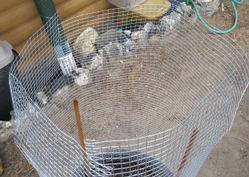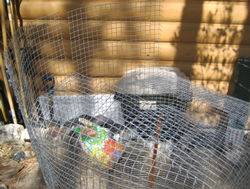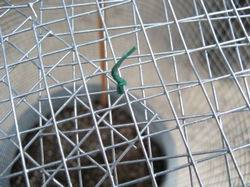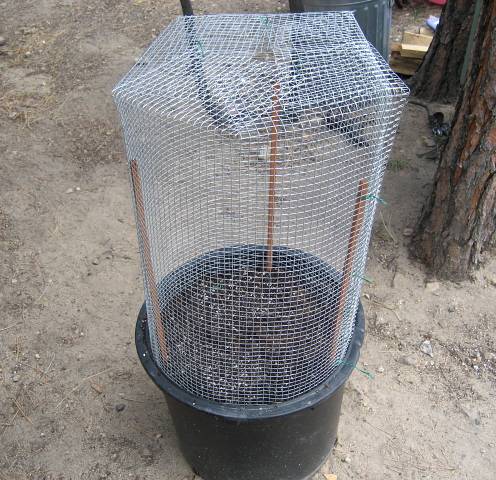I have been asked numerous times recently how to make cages to keep animals from eating plants when they are put out. As it's hard to explain without pictures, I took some time to put together a tutorial on how I do them.
All you really need is a roll of chicken wire, a pair of wire cutters, a tape measure, a rock and some green stakes for securing them.
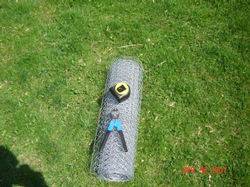
What I do first is roll out 30 inches of wire and secure it, and cut through it all the way across. I use a 2ft roll as it is easiest to control. You can use a 4 ft roll, but it is bulky. Depending on the area that you live in, your cages may be up to 4 feet in heighth, depending on food availability. If you use four foot or taller cages you should cut the wire at 40 inches to have a wider base.
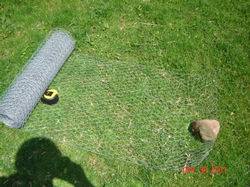
Next, you will want to let the wire go into a circle and turn the cut ends of the wire to fasten them together. Notice how the cut ends cross each other and are easy to twist together.
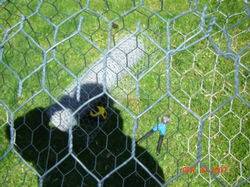
This is what it will look like.
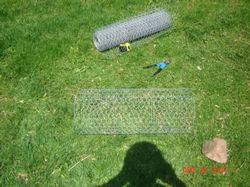
Because I want only 12 inch screens I will cut this in half. It could be left as it is if you have taller plants and need a 2 foot screen.
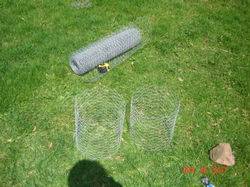
You now have a screen with a smooth edge and an end that has been cut. You want to put the smooth end down on the ground. Take notice of where I bend outward, sections of the bottom so I have a place to put stakes through to hold the screen in place.
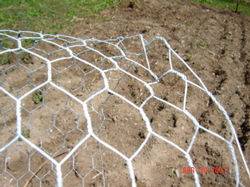
You can now put your plant into the ground, put the screen over it and push the sticks through the tabs you made to hold the screen into place. I usually use 4 sticks and put them through at an angle. If you were using a 4 foot screen, you would want at least six holding the base in place.
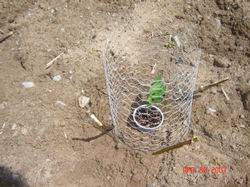
The last step is to close the top of the screen and make sure the cut pieces of wire are pointing upward. This will prick the noses of deer and other animals that get curious and decide to sample the taste of the plants. This is why we put the "factory" edge down and the "cut" end up.
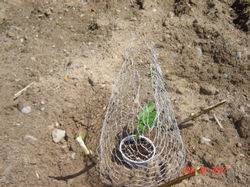
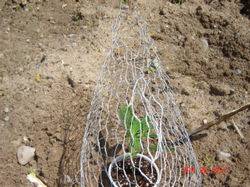
Deer do not see well, but they have good memories. They will get pricked, but they will remember and leave them alone. They may stomp them in anger at times, but most times you can just straighten the screens and they will continue to grow into nice plants. When the plant starts getting to tall, you will have to return and open the screen to let the plant out. By this time there is usually enough native food in my area that they will leave your plants alone.
All you really need is a roll of chicken wire, a pair of wire cutters, a tape measure, a rock and some green stakes for securing them.

What I do first is roll out 30 inches of wire and secure it, and cut through it all the way across. I use a 2ft roll as it is easiest to control. You can use a 4 ft roll, but it is bulky. Depending on the area that you live in, your cages may be up to 4 feet in heighth, depending on food availability. If you use four foot or taller cages you should cut the wire at 40 inches to have a wider base.

Next, you will want to let the wire go into a circle and turn the cut ends of the wire to fasten them together. Notice how the cut ends cross each other and are easy to twist together.

This is what it will look like.

Because I want only 12 inch screens I will cut this in half. It could be left as it is if you have taller plants and need a 2 foot screen.

You now have a screen with a smooth edge and an end that has been cut. You want to put the smooth end down on the ground. Take notice of where I bend outward, sections of the bottom so I have a place to put stakes through to hold the screen in place.

You can now put your plant into the ground, put the screen over it and push the sticks through the tabs you made to hold the screen into place. I usually use 4 sticks and put them through at an angle. If you were using a 4 foot screen, you would want at least six holding the base in place.

The last step is to close the top of the screen and make sure the cut pieces of wire are pointing upward. This will prick the noses of deer and other animals that get curious and decide to sample the taste of the plants. This is why we put the "factory" edge down and the "cut" end up.


Deer do not see well, but they have good memories. They will get pricked, but they will remember and leave them alone. They may stomp them in anger at times, but most times you can just straighten the screens and they will continue to grow into nice plants. When the plant starts getting to tall, you will have to return and open the screen to let the plant out. By this time there is usually enough native food in my area that they will leave your plants alone.
Last edited:



